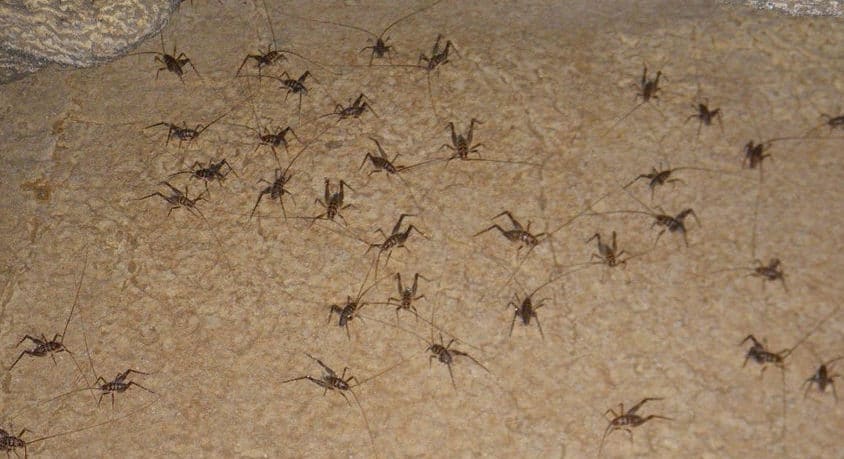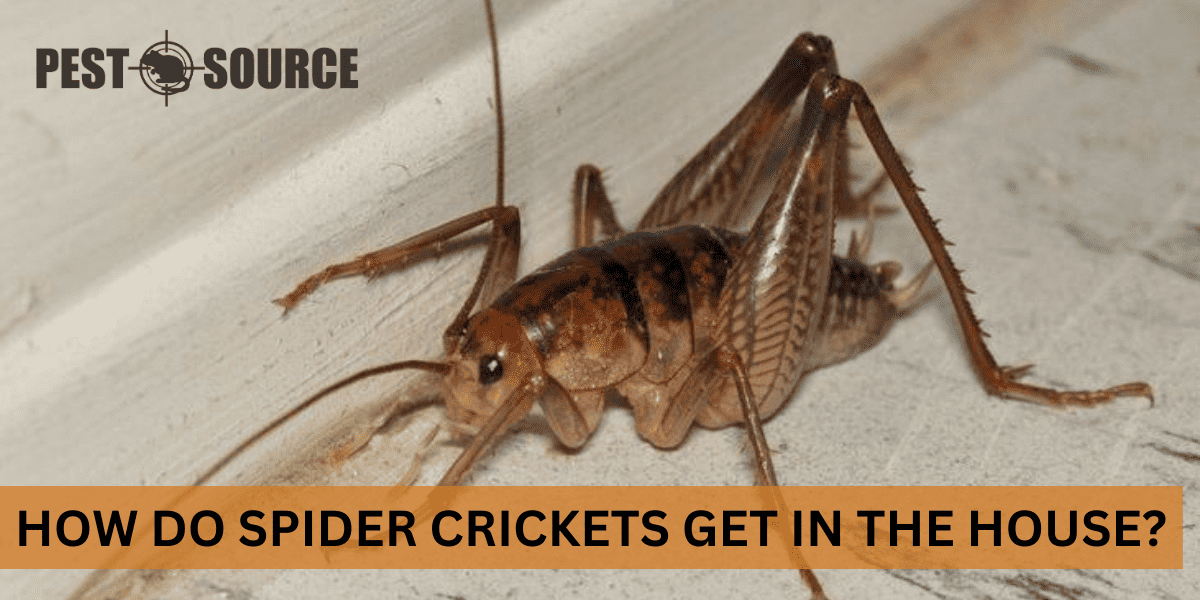Spider crickets often enter houses through cracks, gaps around doors or windows, and other small openings, especially in search of moisture and cooler temperatures. Their attraction to dark, damp areas leads them to basements, garages, and laundry rooms. This article provides insights into their entry points and offers practical advice on how to seal your home against these unwelcome guests.
POINTS
- Spider crickets commonly enter homes through cracks and gaps in the foundation, vents, pipes, and damp areas like basements and crawl spaces.
- Environmental factors such as extreme temperatures and wet weather conditions can drive spider crickets indoors seeking shelter.
- Home maintenance issues like dampness, cracks, and clutter, along with certain human activities such as outdoor lighting and poor waste management, can attract spider crickets.
- Inside the home, spider crickets can cause damage by chewing on fabrics, papers, and walls, and their presence can be a significant nuisance.
- Prevention and control strategies include maintaining a dry and well-ventilated home, sealing entry points, reducing outdoor lighting that attracts insects, using sticky traps, encouraging natural predators, and applying diatomaceous earth in affected areas.
How Do Spider Crickets Get in the House?
Spider crickets, also known as camel crickets, can become uninvited guests in your home. Understanding how they infiltrate your living spaces is the first step towards effective pest control.
Common Entry Points for Spider Crickets

Spider crickets often take advantage of construction features or flaws to enter homes. Here are some common entry points:
- Cracks and Gaps: These pests can squeeze through small openings in the foundation, walls, or around windows and doors.
- Vents and Pipes: Openings for utilities, such as vents for dryers or gaps around plumbing, can provide easy access.
- Basements and Crawl Spaces: These areas, especially if they are damp and dark, are ideal entry points for spider crickets seeking shelter.
Behavioral Patterns and Natural Habitats
Spider crickets are naturally drawn to cool, moist environments. Here’s how their behavior affects their interaction with human dwellings:
- Dark and Damp Areas: They are nocturnal and prefer to reside in dark, damp areas like basements, garages, and crawl spaces.
- Food Sources: They are omnivores, feeding on fungi, plants, and even other insects, which can be found near homes.
Environmental Factors Influencing Indoor Migration
The weather and seasons play a significant role in the movement of spider crickets into homes. Here’s how:
- Extreme Temperatures: During very hot or cold seasons, spider crickets seek refuge in the stable environment of a house.
- Wet Weather: Heavy rains can flood their natural habitats, driving them to seek drier shelter indoors.
Impact of Home Maintenance and Human Activities on Spider Cricket Infestations
Understanding the relationship between home maintenance, human activities, and spider cricket infestations is key to keeping these pests at bay.
Maintenance Issues That Attract Spider Crickets
Certain maintenance problems can make your home more attractive to spider crickets:
- Dampness: Leaky pipes, poor drainage, and high humidity create ideal conditions for spider crickets.
- Cracks and Openings: Neglecting to seal cracks in the foundation, walls, or around windows and doors provides entry points.
Everyday Activities That Invite Spider Crickets
Our daily routines can inadvertently attract spider crickets:
- Outdoor Lighting: Lights can attract spider crickets to your home at night.
- Waste Management: Improperly managed waste and compost piles can provide food sources for these insects.
- Landscaping: Overgrown vegetation near the house can harbor spider crickets and give them easy access to your home.
Preventative Measures to Discourage Spider Crickets
To deter spider crickets, consider these preventative actions:
- Reduce Moisture: Use dehumidifiers and fix leaks to keep your home dry.
- Seal Entry Points: Caulk gaps and cracks in the exterior of your home.
- Manage Waste and Vegetation: Keep waste in sealed containers and maintain a tidy landscape around your home.
By taking these steps, you can create an environment that’s less inviting to spider crickets, helping to prevent an infestation before it starts.
Spider Cricket Behavior and Adaptation Inside Homes
Once spider crickets find their way into your home, they quickly adapt to their new environment. Understanding their behavior inside can help you better manage their presence.
Preferred Indoor Habitats for Spider Crickets
Inside a house, spider crickets seek out spaces that mimic their natural environment:
- Basements and Laundry Rooms: The humidity and darkness of basements and laundry rooms make them prime spots for spider crickets.
- Cluttered Storage Areas: Piles of boxes or stacks of papers can provide shelter and breeding grounds for these pests.
Implications for Homeowners
The presence of spider crickets can lead to several issues for homeowners:
- Damage: Spider crickets are known to chew on fabrics, papers, and even walls, causing property damage.
- Nuisance: Their tendency to jump when startled can be unnerving, and large infestations can become a significant nuisance.
Prevention and Control Strategies for Spider Crickets
Effective prevention and control strategies are essential for managing spider cricket populations and keeping your home pest-free.
Home Maintenance Changes
Regular home maintenance can prevent spider cricket infestations:
- Dehumidify: Keep basements and crawl spaces well-ventilated and dry.
- Seal Cracks: Regularly inspect and repair any new cracks or openings in the exterior of your home.
- Clutter Management: Reduce clutter to eliminate potential hiding spots for spider crickets.
Human Activity Adjustments
Modifying certain activities can reduce the likelihood of attracting spider crickets:
- Exterior Lighting: Use yellow bulbs or sodium vapor lights, which are less attractive to insects.
- Waste and Compost: Store waste and compost in sealed bins and position them away from the house.
- Landscaping: Trim vegetation away from the house to reduce shelter and access points for spider crickets.
Non-Toxic and Environmentally Friendly Control Methods
When it comes to controlling an existing spider cricket population, consider these environmentally friendly methods:
- Sticky Traps: Place sticky traps in areas where spider crickets are frequently seen to capture them without using pesticides.
- Natural Predators: Encourage the presence of natural predators, like spiders, to keep the cricket population in check.
- Diatomaceous Earth: Sprinkle food-grade diatomaceous earth in areas where crickets are a problem. It’s a non-toxic powder that can dehydrate and kill the crickets.



